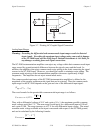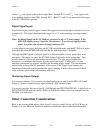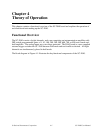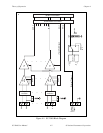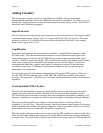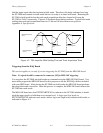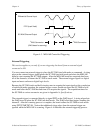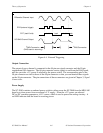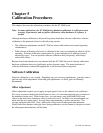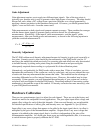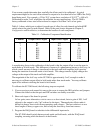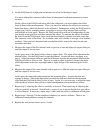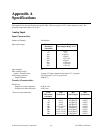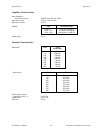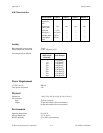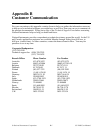
© National Instruments Corporation 5-1 SC-2040 User Manual
Chapter 5
Calibration Procedures
This chapter discusses the calibration procedures for the SC-2040 board.
Note: In many applications, the SC-2040 factory-hardware calibration is sufficient to meet
accuracy requirements, and no further calibration, either hardware or software, is
needed.
Although hardware calibration is discussed in greater detail than software calibration, software
calibration is the preferred choice for the following reasons:
• The calibration adjustments on the SC-2040 are inaccessible under most normal operating
circumstances.
• With software calibration, the board is calibrated in the exact environment in which it will be
operating. Software calibration compensates for system-introduced, in addition to board-
introduced, errors. You can perform software calibration fairly frequently, which helps
reduce drift effects.
Because board-introduced errors are minimal with the SC-2040, the use of software rather than
hardware calibration does not significantly reduce dynamic range. The main drawback of
software calibration is reduced throughput due to the increased processing time.
Software Calibration
Software calibration is very simple. Depending on your accuracy requirements, you may want to
perform only offset adjustment; offset and gain adjustments; or offset, gain, and linearity
adjustments.
Offset Adjustment
Offset adjustment requires you to apply an input signal of zero to the channel to be calibrated.
Zero input can mean shorting the board inputs to zero, or it can mean applying zero excitation to
the transducer being used. In the former case, you can remove only board and DAQ board
offset; in the latter case, transducer offset is removed as well. In either case, measurements are
taken with the zero input signal. Average these measurements to reduce uncertainty. This
average represents the offset. Next, subtract the offset from all subsequent measurements.
Notice that offset changes with gain; thus, during calibration, set the channel to the gain at which
the subsequent measurements will be taken.



